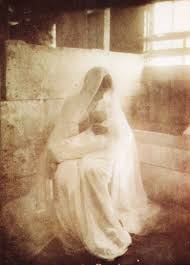
Figure 10: My Pictorialist filter set was drawn from various materials including bubble wrap, a clear ribbed-side cup cut to fit across the filter, an orange plastic shopping bag, mirrored cellophane that showed different colors depending on the angle, and a purple filter.
Pictorialist photography, or pictorialism, was a movement in the late 1800’s when traditional portrait photography began to decline. The pictorialist photographers, modeling themselves after the impressionists, began to capture scenes where the overall scene was less important than the quality of the picture. They were looking to evoke a certain emotion and create an emotional impact from their pictures, whereas traditional portraits could not do that. The pictorialist movement really focused on photography becoming more of an art form. Since impressionism had become so popular, with the soft paintings, the photographers had to do something. Thus, the pictorialist movement began, which included photographers really experimenting with different art techniques to create a very non-sharp, or soft, image. One expert photographer who was excellent at creating soft images was Gertrude Kasebier. She was a photographer who began studying painting at the Pratt Institute, but switched to photography sometime during her time there (National Museum of Women in the Arts). In 1902, she, along with Alfred Stieglitz, helped to found the Photo-Secession, which was a group that promoted Pictorialism. Among her greatest works were “The Manger” and “Blessed Art Thou among Women” (Luminous Lint). These images focused on showing the softness and softly focused images of women (New Britain Museum of American Art). Her images were beautifully crafted and showcased many techniques of softness in photography.
My pictorialist images were shot on the University of Glasgow campus. The campus has a lot of amazing architecture and character that made it really amazing to photograph. Some of my favorite things to photograph there were light fixtures, as shown in figures 1, 3, and 7. The detailing work was really exquisite, both on the light fixtures and found around campus on the side of buildings.
My favorite photo of the collection was figure 1: a rod-iron decoration I found at the Wellington Church across the street from campus. To photograph this, I used a purple filter and bubble wrap. I focused in so that I was shooting through only one of the bubbles, to create a very softly focused image. I shot this photo from a straight on vantage point, and cut the figure so I was only shooting about three-fourths of the structure. What I really love about this picture is that the light shines through the structure at the top, making it appear to have been painted on. The light patterns, to me, look an awful lot like brush strokes. I think this use of light, both the high contrast of the light at the top of the image, which that of much less light toward the bottom, create a really thought-provoking image. I think that you can look at this image and see many different things; there is the light at the top, which has a certain texture, but then you can also see the interesting rod-iron structure. This is a different viewpoint of this rod-iron structure because there are many things to focus your eye on besides the beauty in the rod-iron’s art.
In figure 5 I photographed some etched detailing in the side of an archway on the outskirts of campus. I thought this etching was really intricate and beautiful, so I used the bubble wrap to soften the image and give the appearance that the swirls were going in and out of focus. The colored filter was the mirrored filter that changed colors depending on what angle was being used. I liked using this as well because it gave more texture to the photo by changing the color as the movement in the photo changed as well. In this photo I was also straight on and photographed only a small portion of the larger etching in the archway. What I love about this photo is how the eye moves from top to bottom, following not only the swirl of the etching, but also following the image from softness to sharpness, back to softness, and so on. There is not one specific focal point, but rather, the entire image is the subject. The image would not be the same if I were to focus it on one specific point in the etching. I think this sort of lighting creates a more romantic mood in this photograph, along with a sense of mystery and love.
My photographs are much like Kasebier’s because they portray romanticism and mystery, the same that hers did. However, her subjects were people, whereas mine were architecture. I think, though, that architecture and people can have the same, or similar, feel when given the correct exposure and filter. The softness of the photo in figure 5 really portrays a romantic and calm feel, the same way that Kasebier’s photo “The Manger” (figure 11) does. These photos, just like Kasebier’s, are not snapshots, but they rather evoke a certain thought or emotion when looked at. Instead of taking shots of general scenes, the focus is on the detail of the environment and how the environment creates movement and emotion. Snapshots of scenes cannot do this when taken in a sharp, harsh lighting and mood. Thus, pictorialism did a wonderful thing when creating a new kind of photography; it brought about photographing the beauty of the world rather than just remembering what it looked like.









